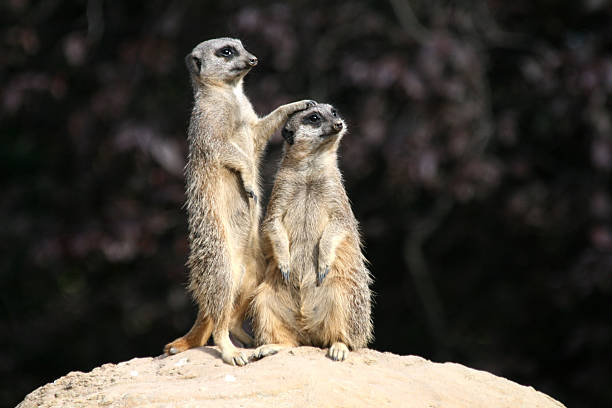Unraveling the Intricate Social Structures of Meerkat Colonies
Meerkats, known scientifically as Suricata suricatta, have piqued the interest of scientists, animal lovers, and laymen alike with their intricate social structures. These small mammals, which hail from the mongoose family, inhabit the southern parts of Africa and have become famous for their cooperative behavior and social hierarchies.

A Look into the Past: The Evolution of Meerkat Social Behavior
Meerkats have been the subject of numerous studies, particularly focusing on their evolutionary biology and social structures. Historically, these creatures adapted to the harsh conditions of the Kalahari Desert, where they primarily reside. Over time, the necessity to survive in an environment with scarce food resources and numerous predators led to the development of their complex social behaviors.
Meerkat Society: The Hierarchical Structure
A typical meerkat society, known as a clan or mob, is a matriarchal structure headed by an alpha female and her mate, the alpha male. These dominant individuals are the only members of the clan that reproduce, ensuring their genetic lineage. The rest of the clan, composed of both related and unrelated individuals, work cooperatively to maintain the group’s survival and protect the alpha pair’s offspring.
The Role of Subordinates in Meerkat Colonies
Subordinate meerkats play crucial roles in the colony. They act as babysitters, watching over the pups when the dominant pair and other members are out foraging. They also serve as sentinels, keeping watch for predators and alerting the group of any danger. Research has shown that these roles are not fixed but vary depending on the individual’s age, sex, and current needs of the colony.
Current Studies and Discoveries
Recent research has uncovered even more fascinating aspects of meerkat social behavior. For instance, a study conducted in 2020 revealed that meerkats use a system of reward and punishment to teach their pups how to forage. This behavior, previously thought to be exclusive to humans and higher primates, suggests a higher level of cognitive ability in these creatures.
Furthermore, another study demonstrated that meerkats use a sophisticated vocalization system, with different calls indicating the type and proximity of a threat. This finding underscores the complexity of communication within meerkat societies, further establishing them as one of the most socially advanced species in the animal kingdom.
The Market Impact of Meerkat-Related Products
The fascination with meerkats has also infiltrated the pet and animal product market. From plush toys to educational books, these items can range in price from $10 to $50. However, it’s important to note that despite their popularity in media, meerkats are not suitable as pets due to their complex social needs and wild nature.
In conclusion, meerkats offer a fascinating glimpse into the world of animal social structures. Their cooperative behavior, social hierarchies, and advanced communication systems continue to captivate scientists and animal lovers alike. While we’ve made significant strides in understanding these complex creatures, there is still much to learn about the intriguing world of meerkats.




